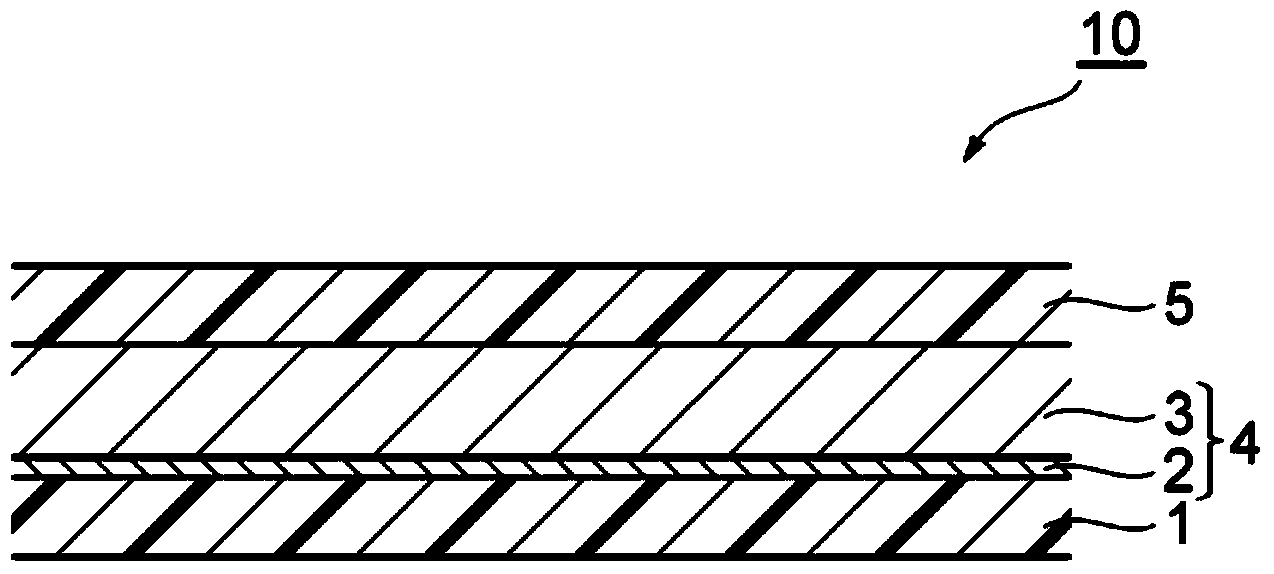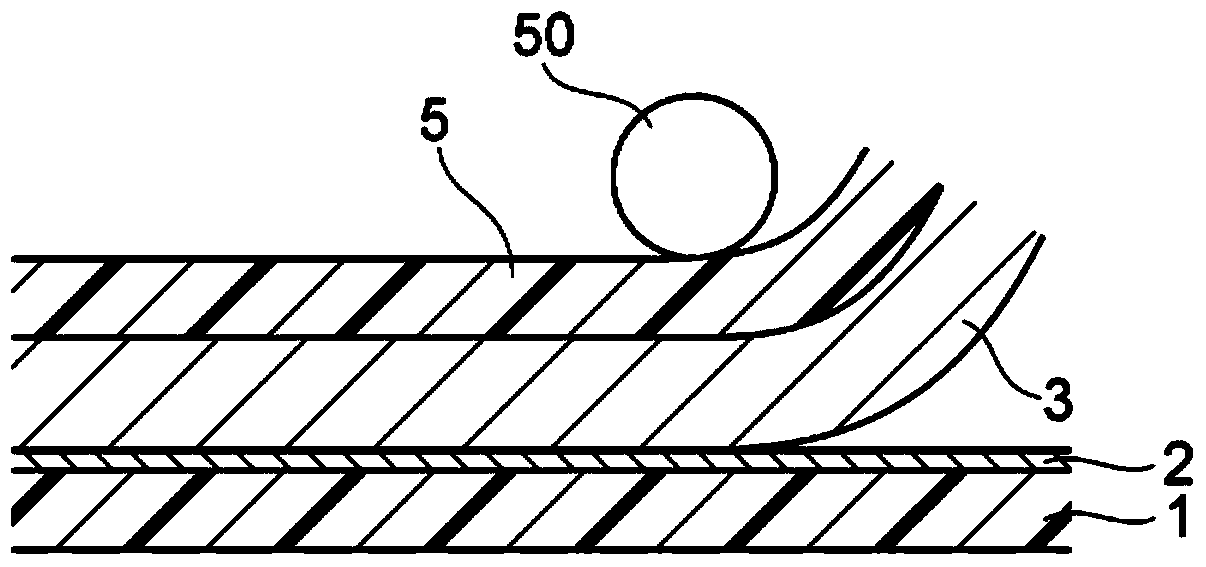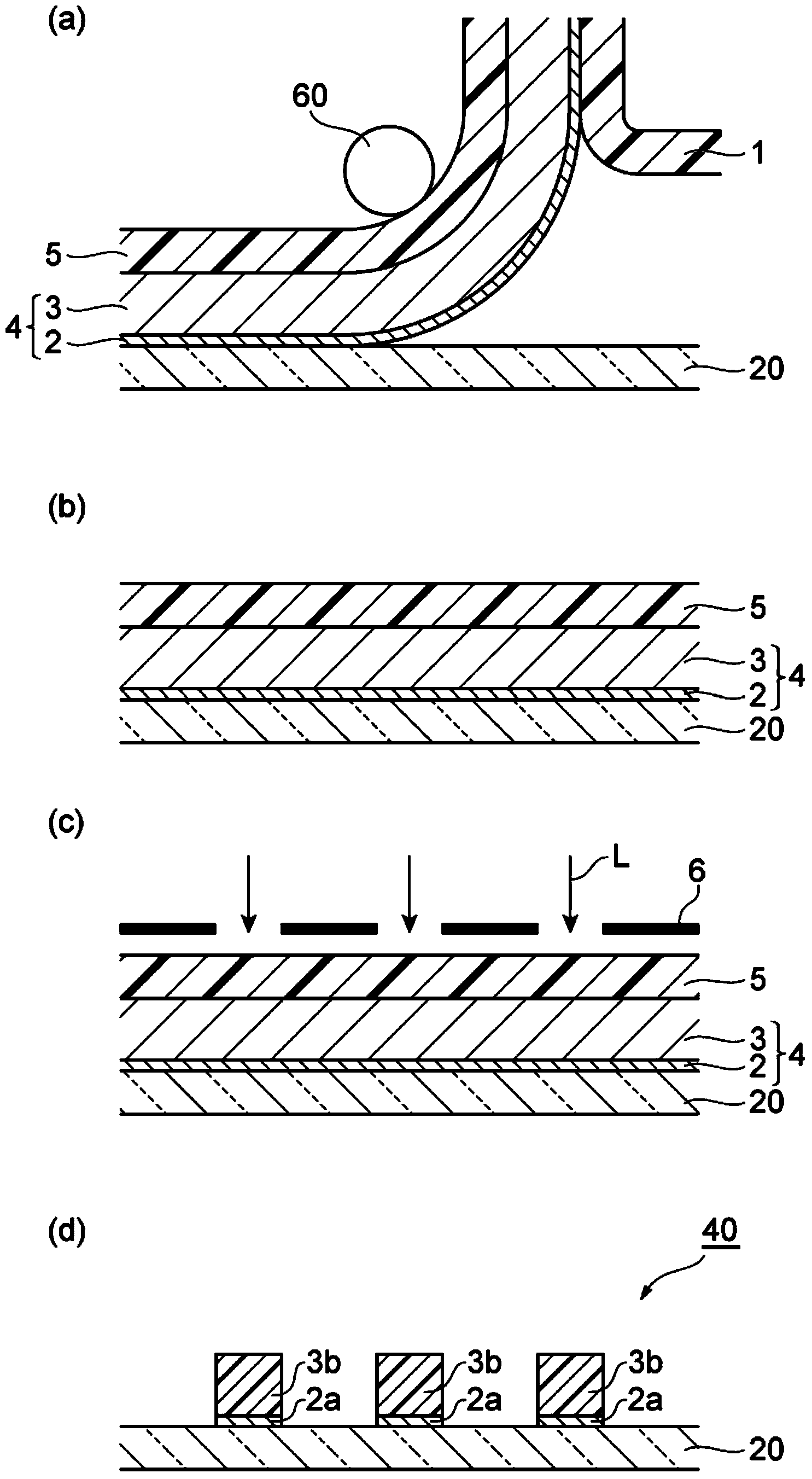Method for forming electroconductive pattern, and electroconductive pattern substrate
A conductive pattern and substrate technology, which can be applied to equipment for manufacturing conductive/semiconductive layers, components of conductive cores, lithography/patterns, etc. Large burden and other problems, to achieve the effect of sufficient adhesion
- Summary
- Abstract
- Description
- Claims
- Application Information
AI Technical Summary
Problems solved by technology
Method used
Image
Examples
Embodiment 1
[0150] On a polyethylene terephthalate film (PET film, manufactured by Teijin Co., Ltd., trade name: G2-16) with a thickness of 16 μm as a support film, the 2 Uniformly apply the above-mentioned conductive fiber dispersion liquid 1, dry it with a hot air convection dryer at 100°C for 10 minutes, and pressurize it with a linear pressure of 1 MPa at room temperature (25°C), thereby forming a layer containing conductive fibers on the support film. The conductive layer of the fiber. In addition, the film thickness after drying of the conductive layer was about 0.1 micrometer as a result of the measurement by the scanning electron micrograph.
[0151] Next, the solution of the above-mentioned photosensitive resin composition was evenly coated on a polyethylene terephthalate film (PET film, manufactured by Teijin Co., Ltd., trade name: G2-50) with a thickness of 50 μm prepared separately, It dried for 10 minutes with the hot-air convection type dryer of 100 degreeC, and formed the ...
PUM
| Property | Measurement | Unit |
|---|---|---|
| diameter | aaaaa | aaaaa |
| thickness | aaaaa | aaaaa |
| diameter | aaaaa | aaaaa |
Abstract
Description
Claims
Application Information
 Login to View More
Login to View More - R&D
- Intellectual Property
- Life Sciences
- Materials
- Tech Scout
- Unparalleled Data Quality
- Higher Quality Content
- 60% Fewer Hallucinations
Browse by: Latest US Patents, China's latest patents, Technical Efficacy Thesaurus, Application Domain, Technology Topic, Popular Technical Reports.
© 2025 PatSnap. All rights reserved.Legal|Privacy policy|Modern Slavery Act Transparency Statement|Sitemap|About US| Contact US: help@patsnap.com



